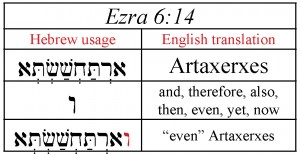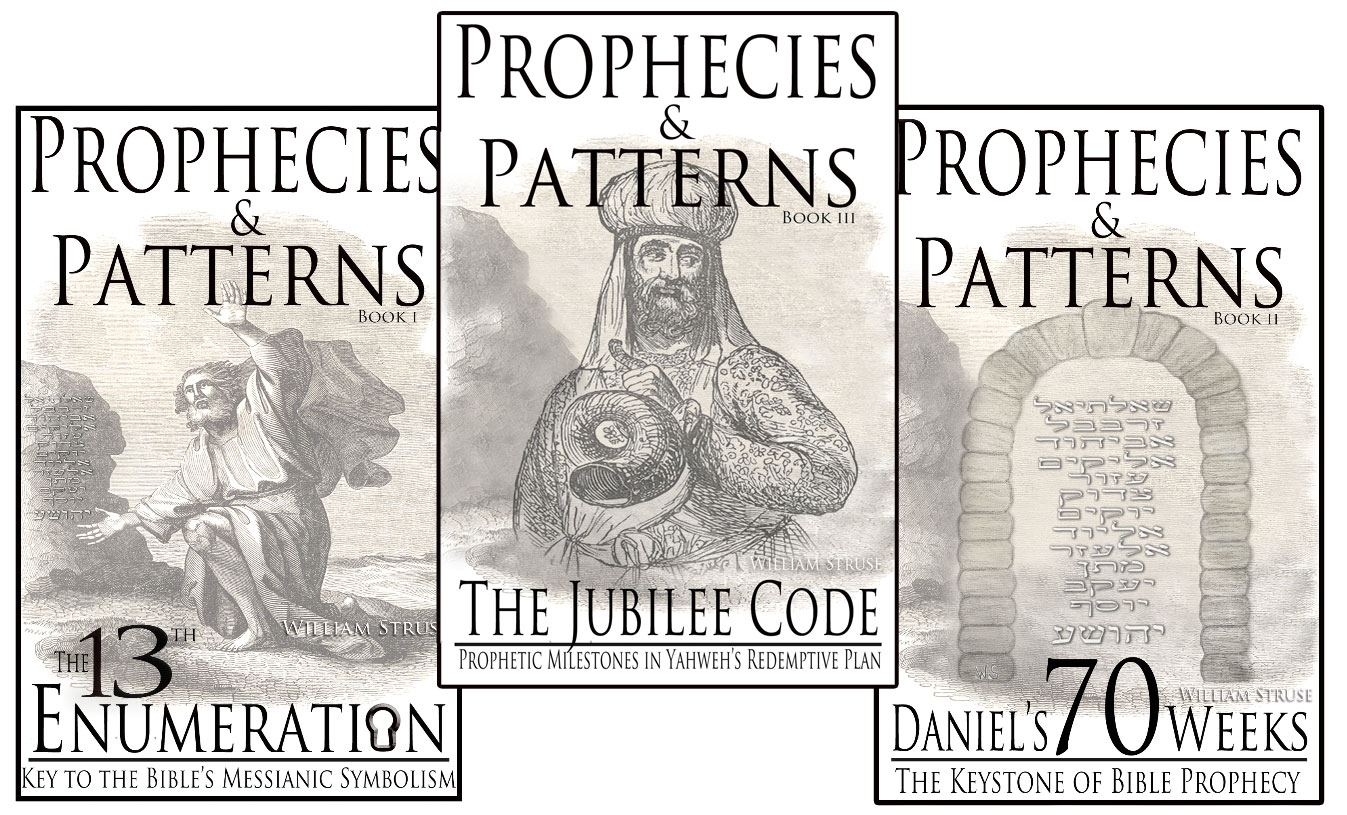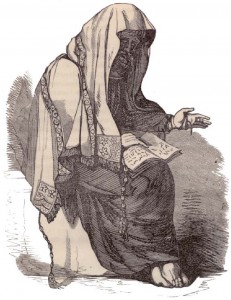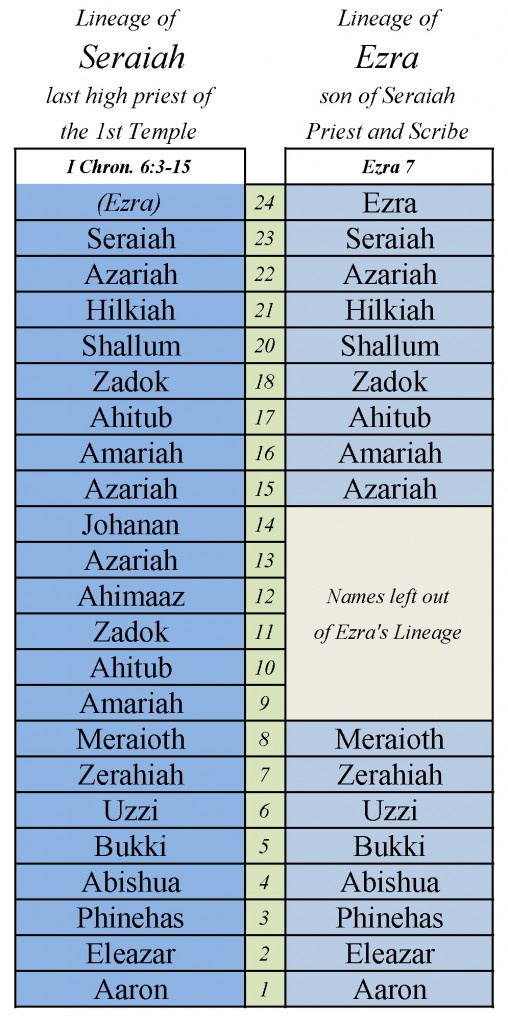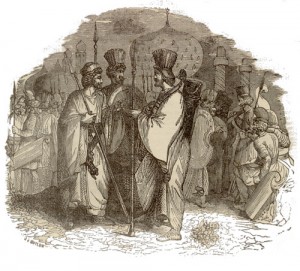 In my previous article Ezra: Priest & Scribe – Part I we learned that the most reasonable explanation of Ezra’s lineage places him as a contemporary of Darius “the Great” son of Hystaspes also known as “Artaxerxes.” Now we will look once again at the chronology of Ezra with this perspective in mind. If Ezra was in fact a contemporary of Darius “the Great” then we should expect additional confirmation from the Old Testament record.
In my previous article Ezra: Priest & Scribe – Part I we learned that the most reasonable explanation of Ezra’s lineage places him as a contemporary of Darius “the Great” son of Hystaspes also known as “Artaxerxes.” Now we will look once again at the chronology of Ezra with this perspective in mind. If Ezra was in fact a contemporary of Darius “the Great” then we should expect additional confirmation from the Old Testament record.
For those who are not familiar with the chronology of the 2nd temple era, it is worth briefly going over it once more to establish the context. In 536 BC, Cyrus gave a decree which allowed the Judean captives to return and build the Temple in Jerusalem. Ezra 1:1-3 tells of these events. Incidentally, for those willing to dig a little deeper, the Cyrus Cylinder found in the ruins of Babylon also offers some intriguing confirmation of Ezra’s record below.
Ezra 1:1-3 Now in the first year of Cyrus king of Persia, that the word of YHWH by the mouth of Jeremiah might be fulfilled, YHWH stirred up the spirit of Cyrus king of Persia….. Thus saith Cyrus king of Persia, YHWH God of heaven ….. he hath charged me to build him an house at Jerusalem…. Who is there among you of all his people? his God be with him, and let him go up to Jerusalem, which is in Judah, and build the house of YHWH God of Israel, (he is the God,) which is in Jerusalem.
As I explained in my article The Fifth Command for the next 16 years the enemies of the Jewish people harassed them in their efforts to build the temple. In fact they did not get much further than laying some of the foundation stones.
The chart below is a summary of the Persian rulers from Cyrus to Artaxerxes I. It will provide a handy reference for those trying to figure out how the Persian kings related to the 2nd temple era chronology.
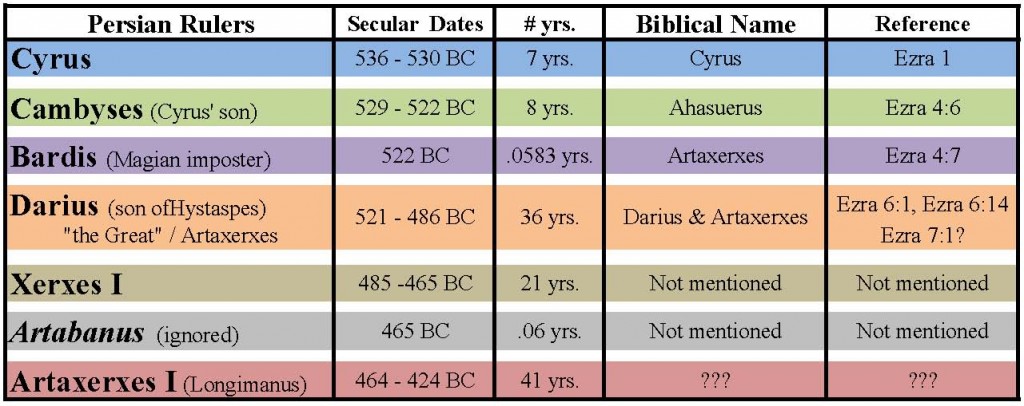
In 520 BC (2nd yr. of Darius), YHWH gave the Judean captives a divine command “to restore and build Jerusalem.” Joshua, the high priest, and Zerubbabel, the governor, listened to the words of YHWH as witnessed by the prophets Haggai and Zechariah and construction on the temple resumed. (Ezra 6:14) Four years later, the temple was finished in the 6th year of Darius.
Now here is where modern Biblical scholarship takes a detour. Ezra 6 ends with the completion of the 2nd temple in the 6th year of Darius.(516 BC) Ezra 7 starts with Ezra, the priest & scribe, setting off on his journey to Jerusalem in the 7th year of “Artaxerxes.”
Today, most Biblical scholars have assumed that this “Artaxerxes” is a reference to Artaxerxes I (Longimanus). This requires them to insert a gap of about 58 years between Ezra 6 & 7. They do this despite the fact that Darius (son of Hystaspes) is in fact called “Artaxerxes” in Ezra 6:14. Let’s take a look.
Ezra 6:14-15 14 And the elders of the Jews builded, and they prospered through the prophesying of Haggai the prophet and Zechariah the son of Iddo. And they builded, and finished it, according to the commandment of the God of Israel, and according to the commandment of Cyrus, and Darius, {and} Artaxerxes king of Persia. 15 And this house was finished on the third day of the month Adar, which was in the sixth year of the reign of Darius the king.
It is imperative to note in the verses above, that it clearly states the Jewish people “builded and finished” the temple according to the “commandments” of God of Israel, Cyrus, Darius and Artaxerxes king of Persia. Notice it states unequivocally that the temple was finished by the 6th year of Darius. That means all the secular rulers mentioned in Ezra 6:14 must have ruled at some point previous to the 6th year of Darius.
Who then is the “and Artaxerxes” mentioned in Ezra 6:14? It couldn’t be the “Artaxerxes” of Ezra 4:7 because this “Artaxerxes” stopped construction of the temple. Who then could it be? Many Biblical scholars have assumed, contrary to the clear context of the verse, that this “Artaxerxes” is a reference to Artaxerxes I – Longimanus. This despite the fact that he reigned almost 60 years after the temple was completed.
Most likely the translators use a single Hebrew letter to further the “Artaxerxes Assumption.” In Hebrew, the letter waw, is often used as a conjunction but as most Hebrew lexicons explain it also has a much wider, though less common, use as well. Below is the TWOT Hebrew lexicon explaining the use of waw.
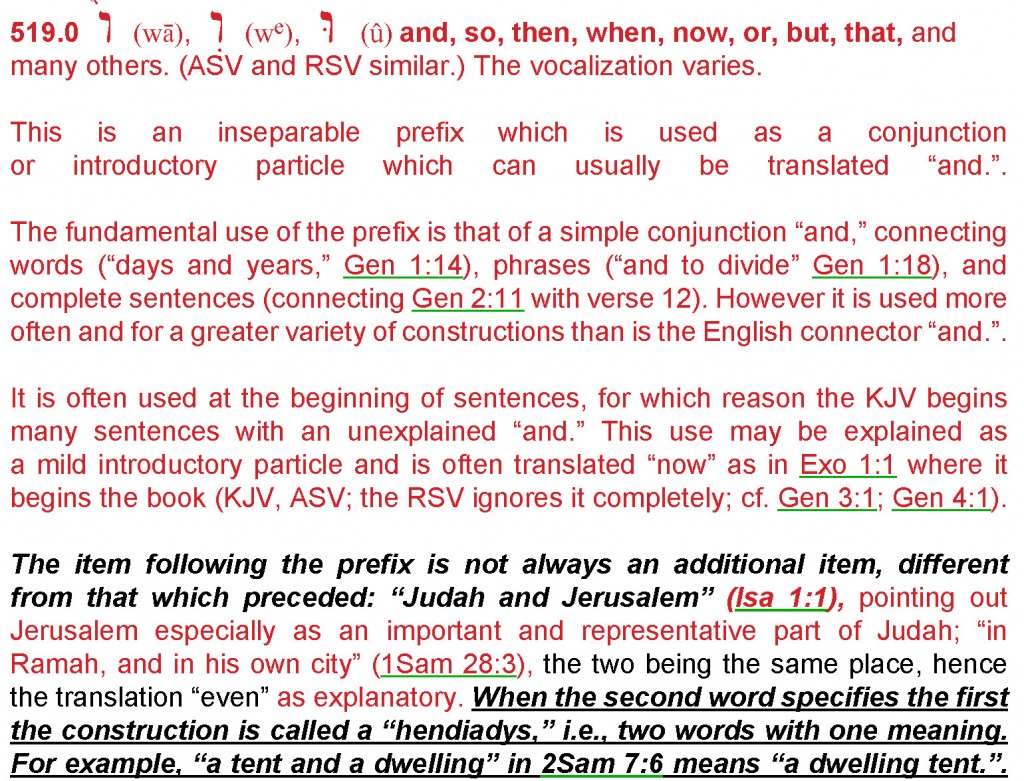 For those who read the entire excerpt you saw the waw can also be used as a “hendiadys,” i.e. two words with one meaning. Take a look at the little chart below. It shows waw as it appears in the Hebrew text of Ezra 6:14.
For those who read the entire excerpt you saw the waw can also be used as a “hendiadys,” i.e. two words with one meaning. Take a look at the little chart below. It shows waw as it appears in the Hebrew text of Ezra 6:14.
Ezra 6:14-15 14 And the elders of the Jews builded, and they prospered through the prophesying of Haggai the prophet and Zechariah the son of Iddo. And they builded, and finished it, according to the commandment of the God of Israel, and according to the commandment of Cyrus, and Darius, and even Artaxerxes king of Persia.
Since there is no reasonable basis to assume the “Artaxerxes” of Ezra 6:14 was another Persian king the translators should have used waw as a hendiadys not a conjunction. Their decision to use the waw as a conjunction was premised upon the necessity to show that Ezra was a contemporary of Artaxerxes Longimanus. There is simply no other reason to add another Persian king to the chronology of Ezra 6:14-15. I encourage you to work it out yourself.
Now take a look at the Ezra 6 and 7 in this context. In the 6th year of Darius “even” Artaxerxes the 2nd temple is completed. Just a few verses later it shows that the temple had been completed and Ezra decided to go up to Jerusalem and teach the people the Torah. Ezra 7 states he received permission to go up to Jerusalem in the 7th year of “Artaxerxes.” With what we now know, this is perfectly reasonable. No need for another Persian king and a gap of 58 years. Ezra simply went up to Jerusalem in the 7th year of Darius also known as Artaxerxes. This confirms the Biblical evidence concerning Ezra’s lineage as we saw in Ezra: Priest & Scribe – Part I. This also has far reaching implications for Bible prophecy teachers who hold to the “Artaxerxes Assumption”.
Those of you who have the heart of a Berean, I encourage you to search this out for yourselves. For those of you too proud or stubborn to look, I humbly ask you to reconsider. The uncomfortable implications of this can no longer be ignored as too much is at stake.
FREE Book Download:
If you would like to learn more about Biblical history and Bible prophecy, you might also appreciate my books in the Prophecies and Patterns series.
At the following link you may download one of the three books shown below. If you like the book and would like to download the other two, all I ask is that you subscribe to my blog. I won’t share your email or spam you with advertisements or other requests. Just every couple of weeks I’ll share with you my love of Biblical history and Bible Prophecy. Should you decide you no longer wish to be a subscriber you can unsubscribe at any time.
Click the following link to download your Free book: Book Download
I hope you’ll join the adventure!
[DISPLAY_ULTIMATE_PLUS]
More Articles related to the prophecy of 70 Weeks and 2nd temple era chronology:
The “Artaxerxes” Assumption – The best kept secret of Old Testament chronology.
The Fifth Command – Why do prophecy teachers ignore it?
Ezra: Priest & Scribe – Part I – Defining “Artaxerxes” in the context of Ezra.
Ezra: Priest & Scribe – Part II – Ezra, Darius even “Artaxerxes”.
Nehemiah: The Governor– Nehemiah’s place in the 2nd temple chronology
Queen of Persia – Part I – Defining Esther is the context of the 2nd Temple era.
Queen of Persia – Part II – Defining Esther is the context of the 2nd Temple era.
A New Testament Cipher – The key to unlocking the prophecy of Daniel’s 70 Weeks.
Ezekiel’s 13th Month– Key to understanding Biblical “time” in the 2nd Temple era
6 milestones – Seventy Weeks – Defining the purpose of the Messiah within Daniel’s 70 “weeks”.
The Messiah Factors (Part I): Decoding 13 & 14 – Symbolism of the Messiah
The Messiah Factors (Part II): The Countdown – Proving Yeshua/Jesus is the Messiah promised in Daniel 9.

